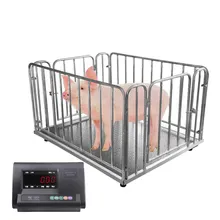Feed Pellet Production Solutions for South Africa’s Agricultural Industry
Dec . 14, 2024 06:05 Back to list
Feed Pellet Production Solutions for South Africa’s Agricultural Industry
The Rise of Feed Pellet Machines in South Africa Enhancing Livestock Nutrition
In recent years, South Africa has witnessed a significant shift in its agricultural practices, especially in livestock farming. With an increasing demand for animal protein, farmers are continually seeking ways to improve feed quality and reduce production costs. One innovative solution that has gained popularity is the feed pellet machine. This technology not only enhances the nutritional value of animal feed but also offers numerous benefits to farmers across the country.
Understanding Feed Pellet Machines
Feed pellet machines are specialized equipment designed to convert loose feed ingredients into compact, uniform pellets. The process begins with the grinding of raw materials such as corn, soybeans, and other grains, followed by mixing and conditioning. The conditioned feed is then forced through a die under pressure, forming pellets of various sizes and shapes. Once cooled and dried, these pellets are ready for storage or immediate use.
These machines come in various sizes, enabling small-scale farmers and large agricultural enterprises alike to benefit from their capabilities. Whether it's for poultry, cattle, sheep, or aquaculture, feed pellet machines cater to the diverse needs of livestock producers.
Advantages of Using Feed Pellets
1. Improved Nutritional Value One of the primary advantages of pelletized feed is the enhanced digestibility of nutrients. Pelleting helps to break down the feed's cellular structure, making it easier for animals to absorb essential vitamins and minerals. This leads to better growth rates and overall health in livestock.
2. Reduced Feed Wastage Traditional loose feed often leads to significant wastage as animals tend to scatter it or refuse certain components. Pellets, on the other hand, are more palatable and reduce feed spillage, ensuring that more of the feed is consumed.
3. Cost-Effectiveness While the initial investment in a feed pellet machine may seem substantial, the long-term savings are considerable. By producing their own feed pellets, farmers can lower feed costs and enhance the overall profitability of their operations. Additionally, with the ability to create customized feed blends tailored to specific livestock needs, farmers can optimize their production further.
4. Ease of Storage and Transportation Feed pellets are more compact than loose feed, making them easier to store and transport. This not only saves space but also minimizes the risk of spoilage and contamination during storage.
feed pellet machine south africa

5. Environmental Benefits The efficient use of feed resources translates to fewer greenhouse gas emissions associated with feed production. Moreover, by recycling by-products and other agricultural waste materials into pellets, farmers can contribute to a more sustainable farming ecosystem.
The Market for Feed Pellet Machines in South Africa
The demand for feed pellet machines in South Africa is on the rise. Local manufacturers are beginning to produce a range of machines to cater to the growing market, resulting in enhanced competition and innovation. Farmers are increasingly recognizing the benefits of investing in this technology, with many reporting improved productivity and profitability.
Furthermore, local agricultural support programs and government initiatives play a crucial role in promoting the use of advanced technologies in farming. Training programs focused on efficient feed production and management encourage more farmers to adopt feed pellet machines.
Challenges and Considerations
Despite the numerous advantages, there are challenges associated with adopting feed pellet technology. The initial investment can be a barrier for small-scale farmers. To mitigate this, cooperative models can be developed, allowing multiple farmers to share resources and costs associated with the purchase of pellet machines.
Additionally, proper training in the operation and maintenance of the machines is essential to maximize their efficiency and longevity. Farmers must also stay informed about evolving feed formulations and nutritional science to create optimal pellets for their livestock.
Conclusion
Feed pellet machines represent a transformative innovation in South Africa's livestock farming sector. By improving feed efficiency, reducing costs, and enhancing animal health, these machines have the potential to revolutionize livestock nutrition. As technology continues to advance and more farmers embrace this method of feed production, South Africa could see a significant boost in its agricultural productivity, ensuring food security for its growing population. Embracing this change is not just beneficial for farmers; it also contributes to sustainable agricultural practices crucial for the future.
-
Automatic Feeding Line System-Pan Feeder Nipple Drinker|Anping County Yize Metal Products Co., Ltd.
NewsJul.29,2025
-
Hot Sale 24 & 18 Door Rabbit Cages - Premium Breeding Solutions
NewsJul.25,2025
-
Automatic Feeding Line System Pan Feeder Nipple Drinker - Anping County Yize Metal Products Co., Ltd.
NewsJul.21,2025
-
Automatic Feeding Line System Pan Feeder Nipple Drinker - Anping County Yize Metal Products Co., Ltd.
NewsJul.21,2025
-
Automatic Feeding Line System - Anping Yize | Precision & Nipple
NewsJul.21,2025
-
Automatic Feeding Line System - Anping Yize | Precision & Nipple
NewsJul.21,2025






